(I hate that I have to say this, but this is a fictional account of the history of a fictional world. I do not believe these things, nor should you, as I am making them up. If I receive any comments that I did not do my research into these events, you will be mocked.)
In the Agent of Argyre series of books, there is an organization called the Alter Control Task Force. Though ostensibly an organization for policing activities of the Alter race, an attempt to prevent an eventual race war, they are actually representatives of a city-state on the ocean: The Republic of Argyre.
The Republic of Argyre, an artificial island anchored to an oceanic ridge in the pacific, is a city-state established by Alters for the sake of harboring their kind and establishing a relationship with the mainstream human population. Despite being an artificial island and attached to no primary landmass, the city’s structure is capable of potentially supporting all 12 to 15 million active Alters on the planet.
How did a race of people who’ve lived in hiding for centuries manage to construct such a city? Why would they build their city in the middle of the ocean? Where did they get the resources for such a task? In the Alterpedia Historia, we will answer these questions and discover the history of the Alters. Today we address…
Dissolution of The Order
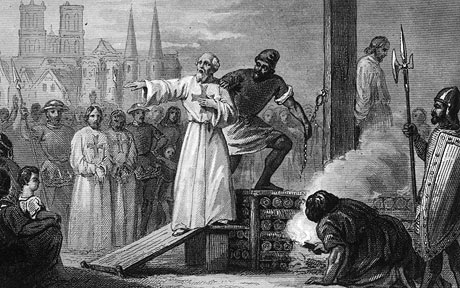
As war tore through the European continent following the fall of Rome, many Alters who didn’t wish to be involved in the conflicts sought stability by migrating to pockets of sanctuary around the world. While many lived in smaller villages, some sought out the safety of the few nations which had formed under Alter control. To the far east Mu was still a viable place to go (though their power had waned considerably as China rose), while to the far north the Alters could find sanctuary in mountain villages established as the “realm of the gods” in the regions near the Arctic circle.

This region, known as Asgard and recorded primarily in myth, always maintained a tenuous relationship between the different races of Alter who had sought refuge. Though having a common reason to live there, there was still a great deal of disagreement on how to deal with humans. It was only after careful negotiations that all of the groups living in the region came to a mutual understanding that in-fighting was not in the best interests of the Alter race. Coming together to sign a peace treaty and mutual protection pact, nine tribe leaders came together at a special ceremony where a single Ash tree which was watered with water from each of the major villages of the area. This tree, eventually to be known as Yggdrasil, united the Alter world in the North and any significant matters between these tribes would be settled under its branches.
Though the environment was bitterly cold and hostile to most life, the relative lack of sun, presence of caves, and some hot springs allowed the major tribe of the area, the Aesir, to establish a stable environment for Alters. Alters adapted for the cold or intelligent enough to build around it could make themselves comfortable despite the harsh winters, and this allowed them to cut ties with most humans easily. The locals, while rough around the edges, were still quite civilized and had a less antagonistic relationship with inhuman creatures. So long as those of the mountain enclave left them alone, they would do the same. However, this peace was not meant to last.
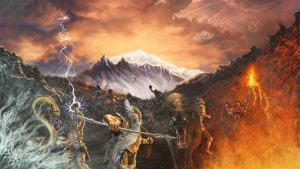
While detached from the conflicts in and of themselves, Asgard was still a prominent supporter of the Knights Stellar and provided them supplies and equipment they could use to stabilize Europe. However, the further from Asgard the Knights were, the less help the Order would receive. This was particularly felt in the Mediterranean regions, where the continued conflicts with human and Alter alike were beginning to spread the Order thin. Losing some of their ability to organize, the Knights soon found that they were beginning to lose influence over the fledgling Christian church which was growing beyond their control.
Though initially seen as an additional source of available resources and support, the higher ups of the order were rightfully concerned by the church’s influence in the known world. Asgard, primarily run by Alters, were concerned with ensuring peace between Alters and mainstream humans. The Church, on the other hand, was entirely concerned with matters of the human world and, gradually, with obtaining power over it. As it continued to spread, particularly after being declared the church of the Eastern Roman Empire, the Knights were frequently put at odds with the very thing their founders had created.
The spread of the church continued to create issues, particularly as Alters themselves began to convert. Hearing that Jesus was one of their own, many Alters felt that he was chosen to be their savior, a unifying force which could bring together the races. The once small cult soon became a dominant religion across the continent and, ironically, caused more strife than unity. Within centuries of the peace accords that had seen Yggdrasil planted, the conversion of the area to Christianity resulted in the treaty of Asgard being ended in the most visual way possible. As the Jotun and other races held to their old religions and the more human-like races began to convert, the leader of the Jotun felt there was only one response to the situation – he burned the tree down.
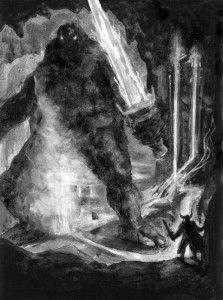
The resulting war was quick and violent, destroying the enclave the Alters in the north had created for themselves and leaving an impression on the humans for centuries to come. The sight of parts of the mountain ranges burning and the knowledge of powerful beings waging war survived the conversion of the region as a story which wouldn’t be formally written down until the Prose Edda were compiled in the 13th century. At this time, and for the rest of history, the event became known as Ragnarok, the twilight of the gods. And this was unfortunately the catalyst for the final downfall of the classical Knights Stellar.
With the loss of Asgard to the north and the growing independence of the Church in the south, the Order’s goals of unity between the races and prevention of a new Atlantis were losing support quickly. In fact, as the Church’s power grew the number of Witch trials and purity tests increased in regions that previously had never seen such activity. Seeing as a great number of Knights themselves were Witches, this was an understandable problem for them. And, unfortunately, the Church had begun forming their own monastic orders of knights which they could command as an army of their own.
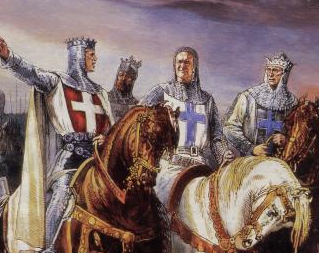
The Stellars’ reaction to these knights was mixed, at best. Though many saw these other orders as allies who could assist in more complicated matters, others were wary of the fact these orders answered only to the Pope and not to their own leadership. This was not a major problem at first, with the majority of these monastic orders simply wishing to fight for the greater good in the name of their religion. But as the Church’s goals continued to diverge from those of the Stellars, it became clear the relationship between the two was nearing its end.
In 1095, after considerable trouble with the Turks, the Byzantine Emperor requested assistance from the Church. Seeing an opportunity to increase its influences in the East (especially after the recent schisms), the Church responded by sending an army consisting of somewhere around 100,000 individuals into Anatolia. The first Crusade had begun.
The leadership of the Stellars voiced their concerns in private, as most of their dealings with the church were still veiled in secrecy, and became aware of a chilling fact. Pope Urban II, not shy to have conflict with human leaders of countries such as France and the Holy Roman Empire, saw even less reason to respect the opinions of “inhuman beasts”. Though he didn’t openly turn against them, having his forces focused on the Crusade, he did set a precedent that the Stellars could no longer depend on the church.
Though they were not excommunicated, due to their secretive nature, the Order found itself living on the fringes of Catholic influence. Nobles who were aware of their mission continued to support them, but few did so openly. Meanwhile, monastic orders within the church’s control almost completely cut ties save one. Having considerable resources and growing in power and influence themselves over the course of the Crusades, one order was in a position to help the Stellars – The Knights of the Order of the Temple of Solomon.
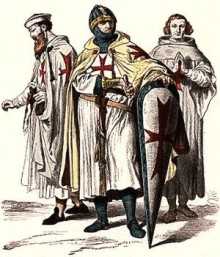
The Templars, holding control of one of the world’s first international banking systems, were wealthy and influential after several crusades. Transferring money for the crusaders as they traveled and establishing fortifications along the routes, the Templars had an infrastructure unlike any other at the time and were one of the few factions the Stellars could turn to through the 12th and 13th centuries. With their support, the Stellars seemed to have an opportunity to continue operations. However, due to their own increasing profile, the Templars were soon making enemies of their own.
Rumors of the Templars dealing with unholy creatures (the Stellars themselves) were running rampant in the late 13th century. Baphomet, a Satyr who held the position of master of ceremonies within the Knights Stellar, assisted the Templars with their initiation rites. However, as nobility (particularly King Philip of France) fell deeply in debt to the Templars, this was the sort of information that could be used against them. Applying pressure to the church and leveraging these details against them, the Templars were soon put on trial and disbanded in violent fashion.

The Stellars, unable to prevent it due to their clandestine nature, did what they could to get some Templars to safety, but soon found there was no saving the order itself. Those who weren’t ferried to safety were subjected to torture, execution, and public shaming. False confessions of heresy and blasphemy were forced out of the Templars, those who refused being subjected to gruesome fates, and those who did were soon burned at the stake.
As the Stellars watched their last line of support being torn asunder, the Order’s leadership realized there was only one thing to do. There was no safe harbor for them any more, their former allies becoming almost more dangerous than their enemies, and it was time to rethink the nature of the order. Though some, having converted to Christianity over the centuries, would have gladly returned if the church had allowed. The Church had provided ample reasons…
To step back, go into hiding, and find a way to win from the shadows.
(I write novels and have started to dabble in screenwriting. If you want to accuse me of not understanding how the Templars “still secretly run the world”, tweet your crazy ramblings at me.)







